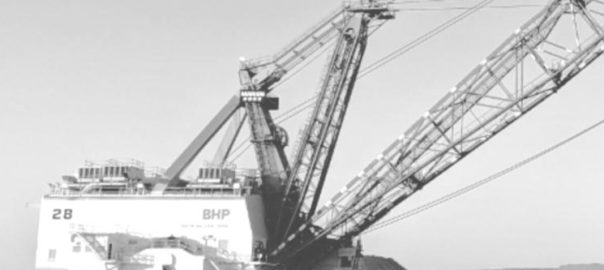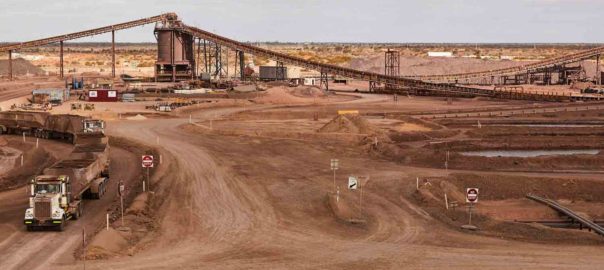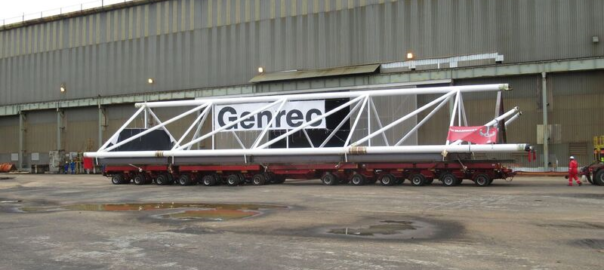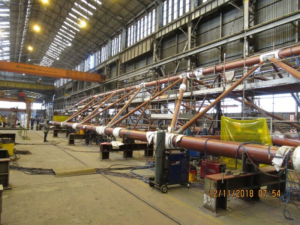After retrofitting an aged DC 8050 dragline with a safer AC power system, a multi-dragline coal mine operating in Queensland experienced a major boost in productivity and power efficiency, substantially diminished operating costs and a positive return on the investment within 18 months, FLANDERS says.
In 2018, senior management of BHP’s South Walker Creek coal mine was developing a plan for the DRE28 DC 8050, a nearly 40-year-old dragline on which the DC rotating equipment and DC control system had reached the end of their operating service life. The dragline was still operating with the original Westinghouse DC motors and generators, which had also reached their end of service lifespan.
At a minimum, the DRE28 motors and generators needed to be replaced. They could upgrade to new DC equipment that would maintain productivity for another 25-plus years with similar operating costs. However, the DC system required regular maintenance and was at a high risk of extended periods of machine downtime due to waiting for parts and maintenance techs, both of which were harder and harder to find, FLANDERS says.
Another option was to retrofit the DRE28 with an AC system. AC dragline systems were already known to have safety advantages and reduced maintenance costs compared with DC systems, according to FLANDERS. They also had the same service life expectancy of 25-plus years.

The team decided to move forward with an AC retrofit from FLANDERS. In July 2019, the boom was lowered on DRE28 DC 8050 and the on-site retrofit began. After 90 days, the DRE28 AC 8050 was back online.
“AC systems are designed with safety built in,” FLANDERS said. “Hardware compatibility, simpler and safer operating mechanisms and scalability are benchmarks of FLANDERS’ AC system design.”
One of the key features of the AC system is the unique, easy-to-access drive cabinet designed to replace DC motor-generator sets, FLANDERS says. Water-cooled semiconductors remove heat, so the cabinets keep parts protected from debris. This results in a substantial reduction in noise, dust, heat, and rotating parts, and reduced exposure of employees and maintenance technicians to these safety hazards associated with DC systems.
The drive cabinet also eliminates the need for on-site machining to blow out dust, balance parts, clean brushes and other regular maintenance DC systems require.
AC hoist/drag motors
The 690 V AC hoist/drag motors are designed to fit in the same size box as the DC motor, with the same footprint, allowing for easy drop-in installation. No modification to brakes, gearing, or coupling is necessary. Class H insulation and high-output blowers help the motors safely produce a 25% higher kilowattage than the DC motor can achieve.
Arc flash safety system
The FLANDERS AC system design mimicked the DC design in generating low- and medium-voltage interactions. The motors and drive cabinet have a category zero arc flash rating, requiring little intervention with specialists or the need to manually isolate systems within the machine.
There are several systems in place to ensure safety from arc flashes:
- Metal doors safely hide high-power components, and all doors use Fortress Interlocks to ensure appropriate isolation of high-voltage before access is gained;
- Electronic control boards can be separated into low voltage panels, nullifying the need to access high-powered areas;
- Arc flash optical relays installed in each drive cabinet monitor for arcs and trip high-voltage VCBs to reduce potential energy below arc venting requirements; and
- Fast-acting fuses are located on a) the secondary drive transformer and, b) bridge cabinets feeding to drive line-ups, and the DC bus in drive line-ups.
Ground fault detection
The built-in Bender IRDH265 Ground Fault Monitor eliminates the risk of electric shock, providing a system shut down override at the sign of a catastrophic event. Each drive line-up has a manual ground fault test function to supplement the auto test function of the Bender. This allows electricians to manually verify functionality of the ground fault monitoring system, FLANDERS explained.
The system is programmable logic controlled, which prevents the circuit from operating while the drive is in operation.
Opportunities for optimisation
Where the DC commutator is limited in output, AC capability is expanding and growing for draglines. There is still potential to be unlocked by analysing machine data and implementing optimising upgrades, according to FLANDERS.
AC conversion delivers results
From September 2019 through June 2021, the DRE28 AC 8050 operated at the previous DC 8050 electrical, mechanical and structural settings. In July 2021, after system optimisation, the AC 8050 surpassed the limits of DC 8050 machines, reaching output levels closer to the 8200 DC draglines models, and continued to bank gains in reduced maintenance costs, increased productivity and improved energy efficiency.
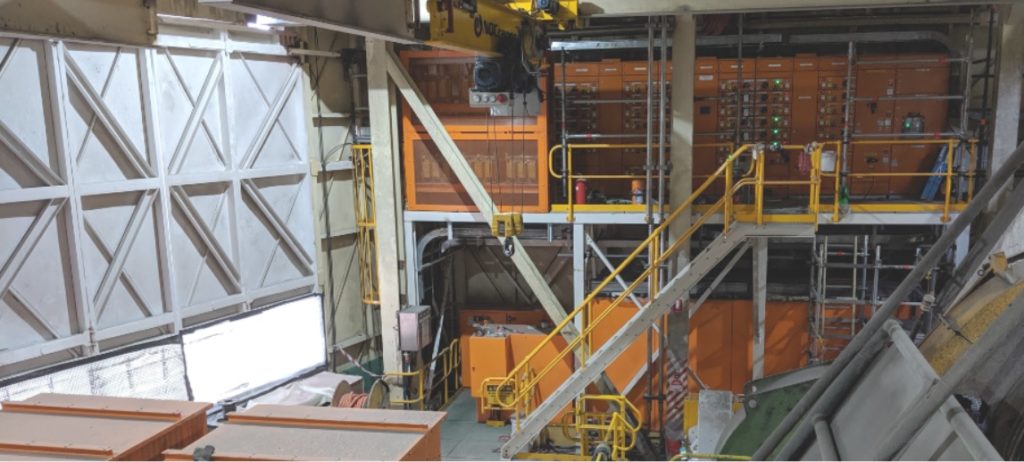
A side-by-side comparison of DC and AC dragline operations over 12 months and including three months of data reported after the July 2021 upgrades, shows the results.
The DRE28 AC 8050 is – operationally and electrically – the safest dragline in its fleet, according to FLANDERS, with the drive cabinets and motors maintaining a category zero arc flash rating since installation.
“The overwhelming response from our client was related to the safe and easy operation of the AC system,” Owen Uebel, Strategic Business Development Manager for FLANDERS, said. “Operators were vocal with management about the improved work conditions.”
In terms of productivity, the low-maintenance design of DRE28 AC system has resulted in reduced machine downtime and proportional gains in machine availability. A twelve-month comparison study confirmed that, compared with the DC 8050, the AC 8050 moved an additional 2 million bank cu.m (BCM).
With the July 2021 optimisation, the AC dragline is expected to reach a minimum of 15 million BCM annually in 2022, setting a record for this mine.
An independent study confirmed an 11% boost in power efficiency over the DC 8050 dragline over an operating period of January 1 to December 31, 2020, meanwhile.
“As previously mentioned, one of the major benefits of the AC system is its scalability,” FLANDERS said. “The 2021 optimisation increased the system’s peak power, resulting in a 4.5 second reduction in cycle time with no additional structural or mechanical stress on the machine. This finding was verified independently by MineWare reports and outside consultants.”
The AC system’s solid-state components have substantially reduced the amount of mechanical wear on dragline parts, extending savings across the lifecycle of the machine, according to FLANDERS. Maintenance costs are down over 55% on average (and potentially upwards of 65% based on available data since July 2021 upgrades).
Additionally, the AC dragline’s efficiency translates to 4.5 kilotons of CO2 offset, with major implications. To put that into perspective, at a global price of $200 per ton, that’s $450,000 annually and $900,000 over the two years of this study.
The AC retrofit achieved a return on investment within 18 months of being online, making it the lowest-cost pre-strip solution on the market, according to FLANDERS.
As of October 2021, the mine’s overall electrical and mechanical maintenance expenditures bottom line decreased by 60%.







